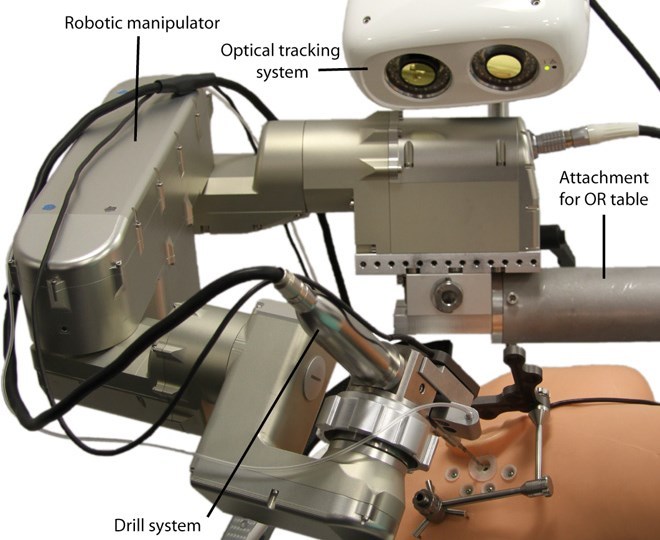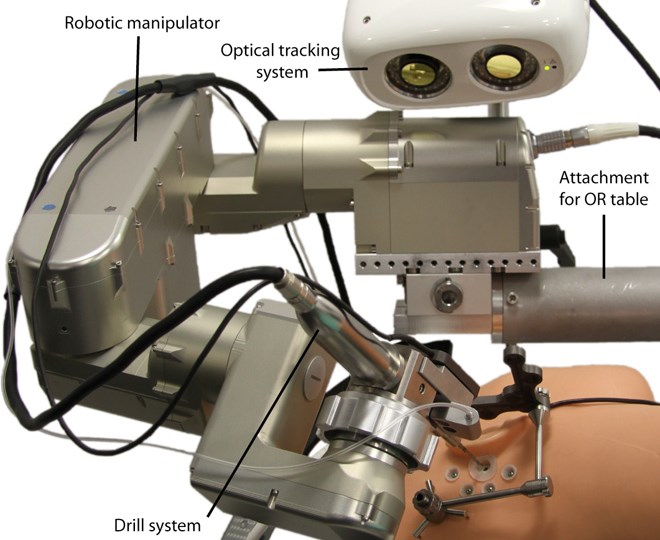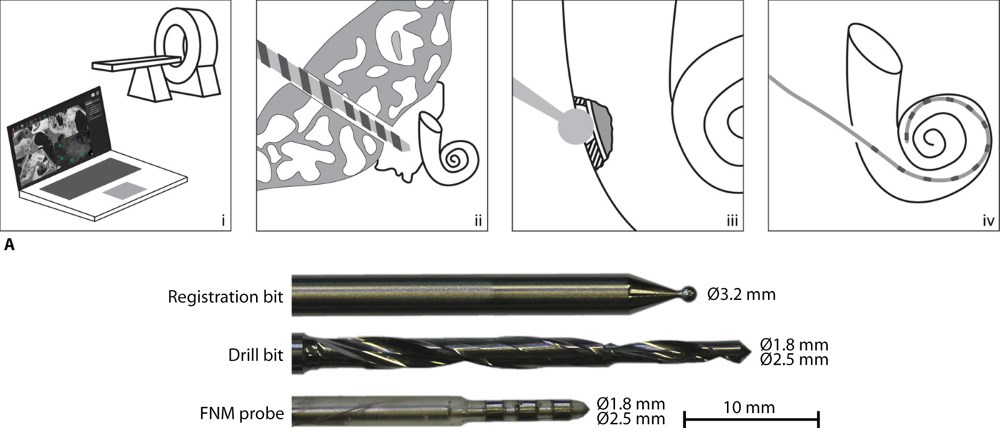

When someone invents a robot specifically made to drill into the skulls of unconscious, immobile humans, you’d be forgiven for feeling a natural reaction along the lines of “for the love of God, why?” But trust me, this particular robotic trepanation station is a good idea.
The issue surrounds what is called microsurgery, in particular, installing cochlear implants, tiny devices that relay sound directly to the inner ear of someone with a hearing impairment.
The procedure to implant these things is performed tens of thousands of times per year, but it’s a risky and extremely fiddly one where the slightest error or involuntary movement can cause permanent damage.
As in other situations where precision is critical, machines can be of help. In this case, researchers from the University of Bern have been working on a robot that performs the most delicate and potentially damaging step: drilling into the skull at the precise location and depth to give access to the right part of the cochlea.

Yes, they have special drill bits just for getting through skull and tissue. The iii and iv parts of the figure are proposed but untested further opportunities for robotic implantation procedures.
The team’s paper, published today in Science Robotics, reports the success of using the robot for drilling purposes, and proposes further applications, such as the actual implantation processes.
In the meantime, they use the drilling process as a platform to prove that the robot can hook into surgery planning systems, stereo vision, live detection of tissue types and so on. Other microsurgeries could also benefit from the technology.
If the robocalypse comes, they won’t need a treatment plan to drill into your brain. Until that happens, robots like this could provide some much-needed consistency in surgical procedures that, like this one, exist at the boundary of what humans are capable of.

